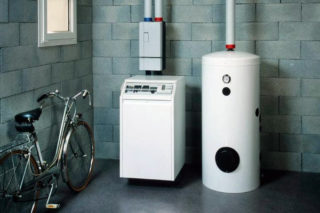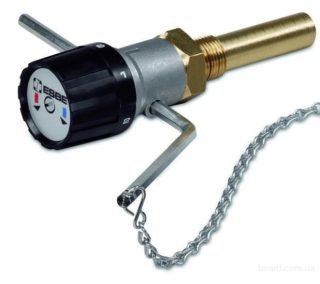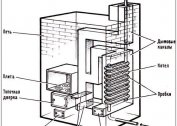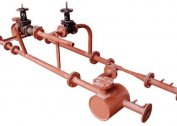To achieve a comfortable temperature in the room, it is not enough just to turn on an autonomous heating or air conditioning system, since this technique is not able to independently analyze temperature indicators. For optimal functioning, such systems are additionally equipped with temperature controllers - devices that maintain a temperature set by a person.
The main types of boilers
At the stage of construction or reconstruction of a country house, special attention must be paid to the choice of the heating system of the house.
The range of boilers is designed for various financial, technical capabilities and personal preferences of homeowners. First of all, you need to find out what types of equipment exist, which system will be most preferable in a particular case.
Gas boilers

If a gas pipeline passes near the house, the issue of selling heating will be solved faster and easier, as well as with less financial investment.
The gas heating system includes a boiler, radiators, automation devices that provide security, valves, gas pipelines. Such heating has a significant advantage - the cost-effectiveness of installation, maintenance and operation. Modern gas boilers equipped with automation units allow a person not to take part in the operation of the equipment. If the flame goes out, the system re-ignites the burner. This type of equipment has a high efficiency.
Electric boilers
If there is no possibility to connect to the gas pipeline, it is necessary to think over the water heating system using an electric once-through boiler. Distilled water or non-freezing liquid can be used as a heat carrier.
The electric heating system starts working as soon as it was turned on. During operation, it is important to observe the pipes and radiators in order to prevent leakage of the coolant, otherwise the likelihood of combustion of the heating element increases.
The device of electrical equipment allows it to independently adjust to optimal power consumption. If the set temperature is exceeded, the system will automatically shut down. Equipment with a capacity of 2 to 25 kW allows you to heat a country house, outbuildings and other premises. In the event of an emergency, the system shuts itself down.
The greatest demand in the domestic market is enjoyed by German boilers from the manufacturer Bosh, Czech Dakon and Polish Kospel. Electric boilers are more expensive compared to gas boilers, but they have many advantages.
Types of temperature regulators for the boiler
There is a wide variety of temperature sensors, which are classified according to power, installation method, type of control, purpose, etc.
Such divisions are rather arbitrary, since there are a large number of thermostats that combine the ability to control various climate equipment. For example, there are models that can simultaneously maintain the optimum temperature of heating devices and the floor.
Depending on the control method, two main types of temperature sensors are divided:
- mechanical;
- electronic.
They have fundamental differences in their functioning, as well as advantages and disadvantages that you need to familiarize yourself with before buying.
Mechanical
The mechanical temperature controller for the heating boiler has a simple design, a minimum number of electrical circuits are involved. The device is controlled using a mechanical handle or an on / off switch. The required temperature is set by turning the thermostat knob in accordance with the scale on the housing. The visual interface is quite primitive, it is a network indicator.
Mechanical models have established themselves as budget and unpretentious devices. Their advantages did not end there:
- tightness;
- automatic shutdown of heating.
There are also disadvantages. Highlight low functionality and difficulty in fine-tuning the temperature regime.
Electronic
The electronic thermostat for the heating boiler is equipped with more complex circuitry. Such equipment always has a full-fledged visual interface: a liquid crystal or digital screen, operation settings are carried out using the built-in buttons. The main difference between electronic and mechanical thermostats is their great functionality. Devices are able to lock the keys, program the work according to the set schedule using the Internet.
Electronic temperature controllers include the following components:
- remote temperature sensor;
- contact group - electronic key;
- controller - a device that regulates a specific temperature level.
Electronic devices have a large list of advantages:
- safety of use;
- wide range of adjustments;
- high efficiency;
- a wide variety of design solutions;
- high accuracy;
- energy saving.
Electronic thermostats are an integral part of the smart home system.
Installation conditions
I install the thermostat remotely from the boiler, it is responsible for the function “turn on / off heating”. The temperature controller sends a pulse to the control unit of the heating system.
The compact thermostat is mounted separately, attaching it to the wall with screws and connecting all the necessary wires. To do this, adhere to the following scheme:
- Connect the neutral wire.
- Connect the wire to provide power to the boiler. It should be the connecting link of the voltage socket and thermostat. Completing the task will simplify the presence of an anchor.
- Close the box.
- Set optimal temperature parameters.
Some models of thermostats are equipped with a remote control through which control is performed. This option is typical for boilers of any type.








